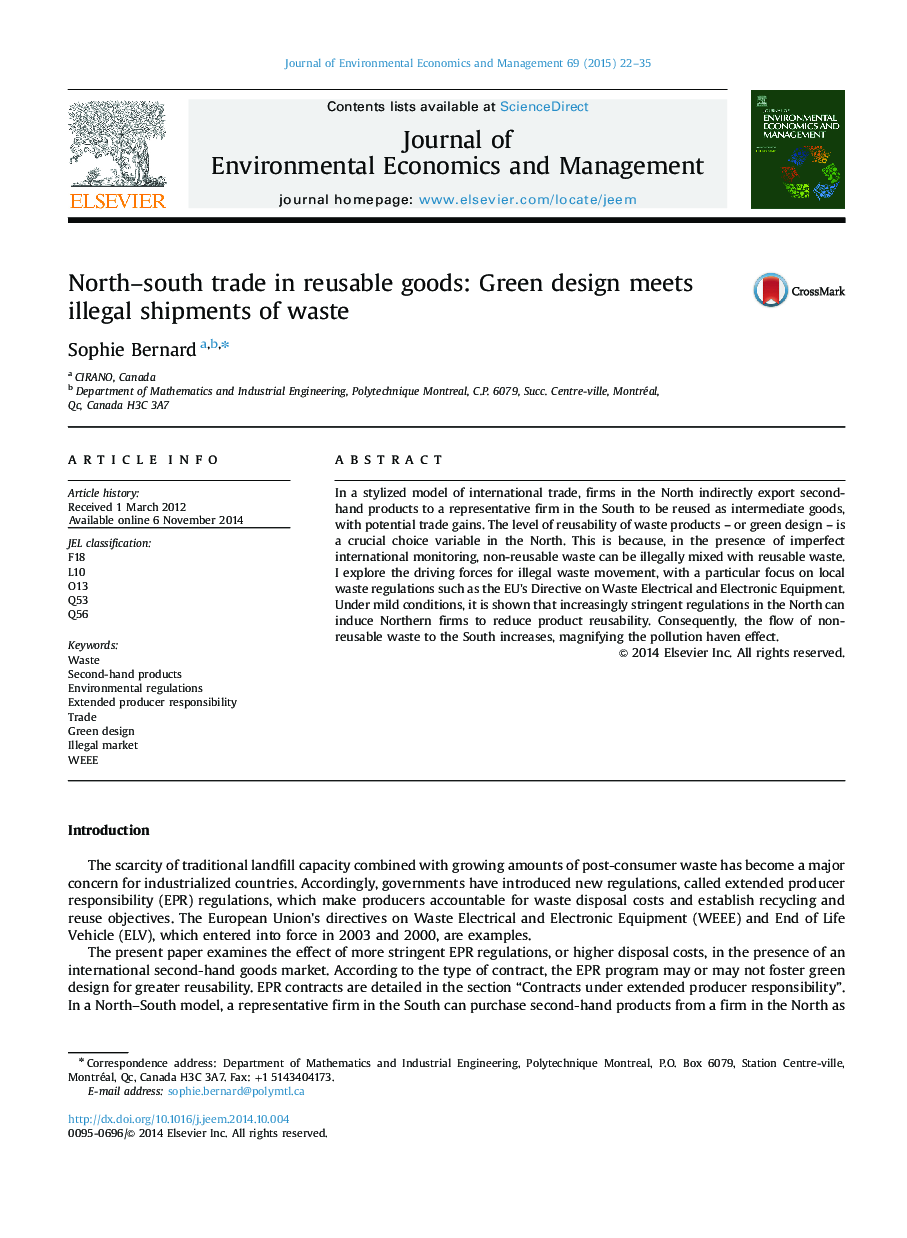| کد مقاله | کد نشریه | سال انتشار | مقاله انگلیسی | نسخه تمام متن |
|---|---|---|---|---|
| 958898 | 1478877 | 2015 | 14 صفحه PDF | دانلود رایگان |
• The pollution haven hypothesis PHH and the level of illegal shipments are examined.
• With green design, results depend on differences in standards and illegal markets.
• Stronger regulation in the North may induce firms to reduce reusability.
• Higher reusability can reduce pollution in the South, contradicting the PHH.
• Stronger international monitoring may also induce firms to reduce reusability.
In a stylized model of international trade, firms in the North indirectly export second-hand products to a representative firm in the South to be reused as intermediate goods, with potential trade gains. The level of reusability of waste products – or green design – is a crucial choice variable in the North. This is because, in the presence of imperfect international monitoring, non-reusable waste can be illegally mixed with reusable waste. I explore the driving forces for illegal waste movement, with a particular focus on local waste regulations such as the EU׳s Directive on Waste Electrical and Electronic Equipment. Under mild conditions, it is shown that increasingly stringent regulations in the North can induce Northern firms to reduce product reusability. Consequently, the flow of non-reusable waste to the South increases, magnifying the pollution haven effect.
Journal: Journal of Environmental Economics and Management - Volume 69, January 2015, Pages 22–35
